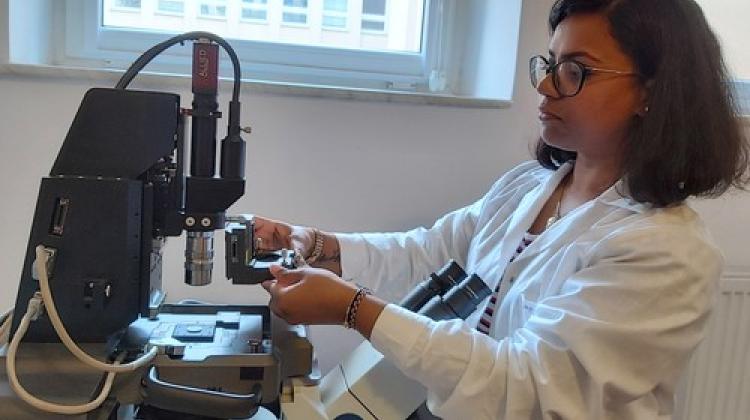Artificial intelligence helps diagnose prostate cancer
 Credit: Fotolia
Credit: Fotolia
A method of using neural network-based AI developed by Polish scientists can advance prostate cancer diagnostics and improve its quality, says the National Information Processing Institute - National Research Institute.
After lung cancer, prostate cancer is the second most frequently diagnosed malignant neoplasm in men. It is diagnosed in every eighth man, usually in an older age. In Poland, 15 patients die from prostate cancer every day.
If detected early, this cancer is usually curable but compared to methods of detecting other types of cancer, prostate cancer diagnosis is more complex.
Neoplastic changes are most accurately visualized by magnetic resonance imaging (MRI). However, this method of prostate examination is more difficult than in the case of most malignant tumours. Different imaging methods must be used and many features of the tumour must be examined, which makes the interpretation of the result difficult and significantly longer.
Each image must be analysed separately based on the characteristics that are specific to this type of cancer. This analysis requires the expert knowledge of radiologists, who constitute only about 2% of doctors in Poland, which additionally extends the waiting time for the examination and proper diagnosis. Interpretation of the results is subjective and depends on the radiologist's knowledge and experience.
Dr. Jarosław Protasiewicz, director of the National Information Processing Institute - National Research Institute said: “Our research shows that artificial intelligence can effectively improve the work of doctors. The results are very promising and I am convinced that they will also help other scientists to develop modern technological tools that can be used in the diagnosis of prostate cancer and other diseases.”
Scientists from the institute's Laboratory of Applied Artificial Intelligence have developed the eRADS research platform used to standardize descriptions of medical reports. This tool allows doctors to objectively assess the clinical significance of a change on the basis of the five-point PI-RADS (Prostate Imaging-Reporting and Data System), which allows to distinguish clinically significant changes. The platform also enables research data collection, which in the future will help create solutions that will automatically estimate clinically significant features.
In this case, the researchers’ artificial intelligence is designed to support decision-making processes.
The researchers from the National Information Processing Institute conducted a pilot study involving 16 patients diagnosed by two radiologists at the Central Clinical Hospital of the Ministry of Interior and Administration in Warsaw to assess the reliability and initial clinical usefulness of the eRADS system.
According to the institute, the results of the pilot study are promising. The assessments of clinical significance of the lesion by radiologists using the tool developed at the National Information Processing Institute are more consistent than when they perform the analysis without using the platform.
The use of eRADS helps to reduce the differences between the quality of diagnosis of experienced and inexperienced doctors. Precise assessment of lesions will significantly reduce the number of patients referred for biopsy.
Piotr Sobecki, head of the Laboratory of Applied Artificial Intelligence at the National Information Processing Institute - National Research Institute, said: “In our laboratory, we also studied the use of other areas of artificial intelligence in the diagnosis of prostate cancer. We analysed the tools that use machine and deep learning.
“Our goal was to compare the obtained results with diagnoses made by experienced and inexperienced radiologists. A predictive model of clinical significance of changes, based on machine learning tools, was based on the image features (such as homogeneity) in the cells and their surroundings.
“We obtained a model that accurately classified clinically significant changes with 75% probability, which can be compared to the diagnosis of an inexperienced radiologist. The most promising results were obtained from the application of domain knowledge in the architecture of neural networks.
“The developed models provide a better quality of diagnosis of neoplastic changes compared to the assessments of inexperienced and experienced radiologists, making a correct diagnosis with 84% probability."
The results obtained with the neural network models were equal to or better than the diagnosis made by experienced radiologists. This was confirmed by the results of the National Information Processing Institute study using historical data from six radiologists, who had evaluated 32 neoplastic lesions.
The researchers say that artificial intelligence using deep learning will not replace doctors, but it will make their work easier and accelerate the start of treatment. But there are still not enough open databases that could be used to improve AI algorithms. These models are only as good as the data, on which they learnt. This includes both their quantity and quality. (PAP)
Author: Paweł Wernicki
pmw/ ekr/ kap/
tr. RL
Przed dodaniem komentarza prosimy o zapoznanie z Regulaminem forum serwisu Nauka w Polsce.


















